We won't attempt to recount the events of
the struggle for Guadalcanal. We will show some of what we saw and would
recommend the reader look up the relevant history.
Guadalcanal began as a fight over an
airfield and became the turning point for the war in the South Pacific. It
essentially lasted from August 1942 to February 1943, but for those present it
must have seemed like a lifetime.
We booked a tour through the Visitor's
Bureau. Like most things here, it didn't quite work out as planned or
advertised. They get very few visitors here, especially after the recent riots
caused the US and Australia to warn citizens not to visit. The guide we finally
hired was knowledgeable but not exactly a font of history. The tour was in 2
parts, the first segment west of Honiara, the other east.
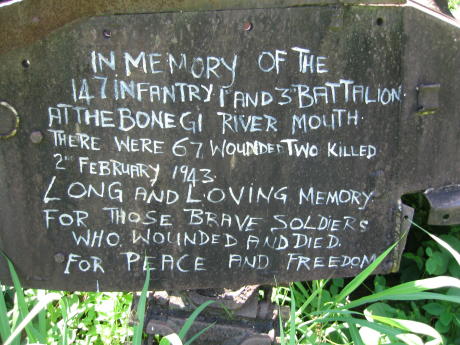
This is a sign painted on a rusting Sherman tank in a
field at Bonegi Beach, no doubt by a veteran.
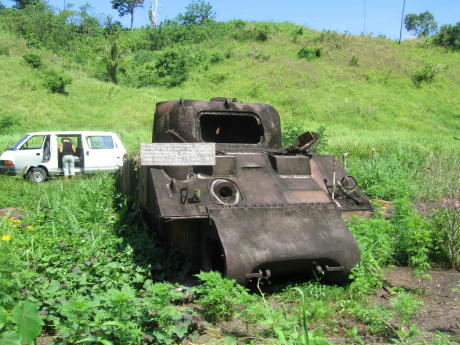
Here's what's left of the tank.
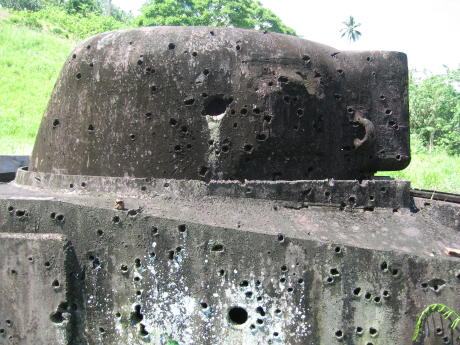
This gives you an idea of the ferocity of the fighting.
The big hole in the center of the turret must have been fatal.
At about the end of the decent road west of Honiara there
is the small and simple Vilu War Museum. Some of it's just junk, but there are
some gems.
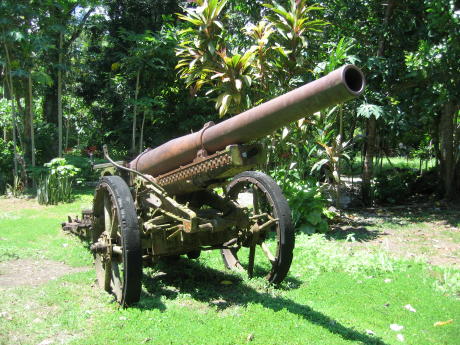
This is a Japanese 155mm howitzer. It must have been
tough to move in the swampy terrain, but the Japanese didn't have much artillery
anyway.
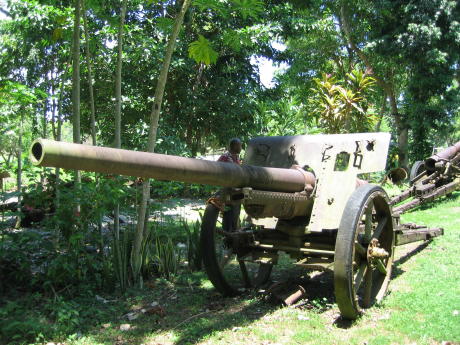
This is one of their 105mm pieces. When a Japanese
veteran examined it he warned the museum that it could still be fired.
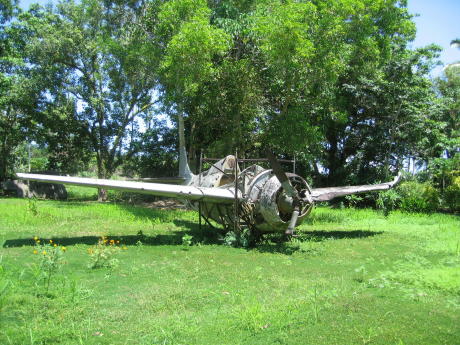
Here's the remains of an F-4 Wildcat fighter. The wings
still fold.
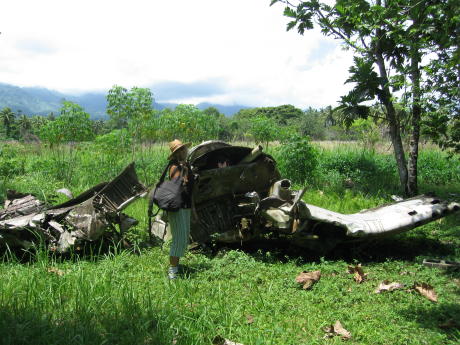
The admiral in front of an F-4U Corsair, with its
distinctive wings. There are other examples but they are in rather poor shape
and only of interest to real buffs.
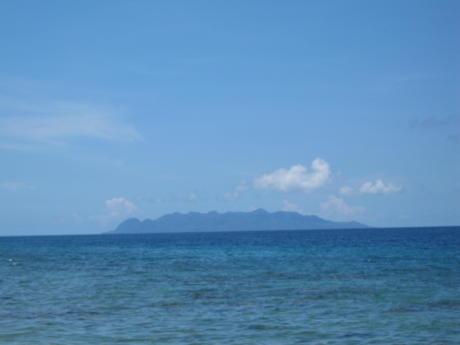
This is Savo Island, where the Japanese Navy would hide
before making night attacks on the US fleet.
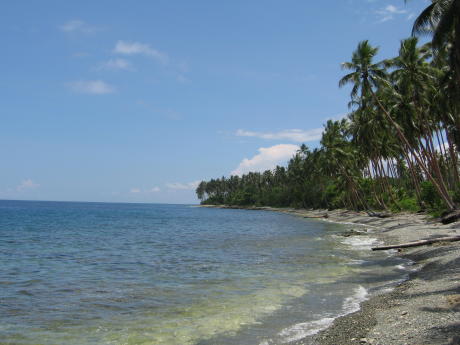
This is Bonegi Beach, where the desperate Japanese ran
transport ships onto the beach in the hope they could unload supplies before
they were destroyed by planes of the "Cactus Air Force".
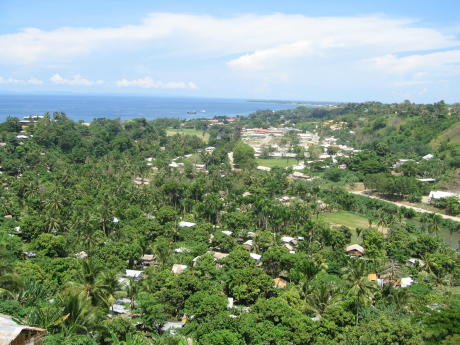
This is a view of Lunga Point from "Skyline
Ridge", where the US war memorial is located. The person who organized the
memorial, veteran Bill Fisher, bought the hilltop for $80.
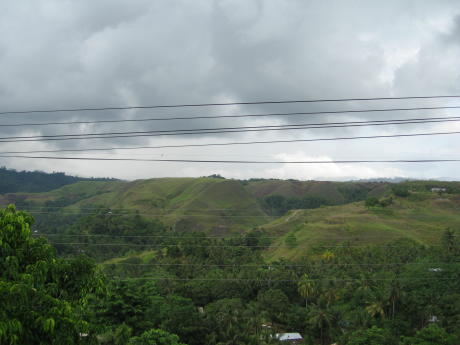
This is the famous "Galloping Horse", so-called
because it looked like a horse on aerial photographs. Note how steep the ridges
are. The Army had to remove the resident Japanese on the ridge tops.
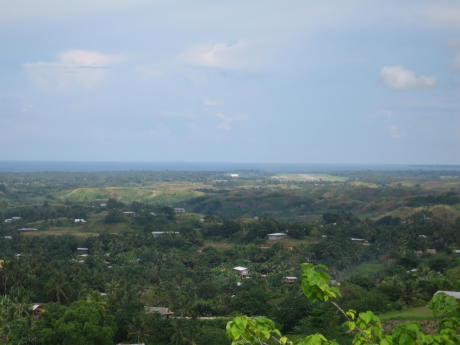
This is the view of Henderson Field from Mt
Austen. The
runway is the bald spot near the coast on the right. Bloody Ridge are the hills
in the middle. This is why the US finally decided to clear the Japanese from
this high ground, as their view was too good.

This is the infamous "Gifu Strongpoint", which
the Army attacked by direct assault. It was riddled with machine-gun
nests.
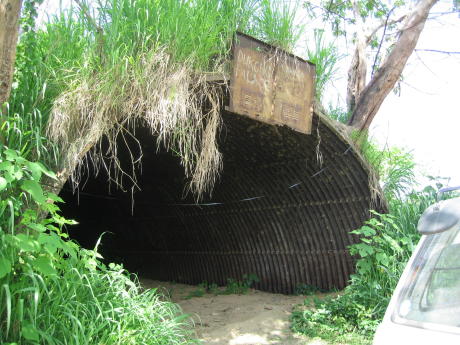
This is an old munitions bunker at Henderson Field. The
sign says "Dukong Palace". A dukong is a sea cow but we were told it
is a local slang term for prostitute, which supposedly is the current use for
the place.
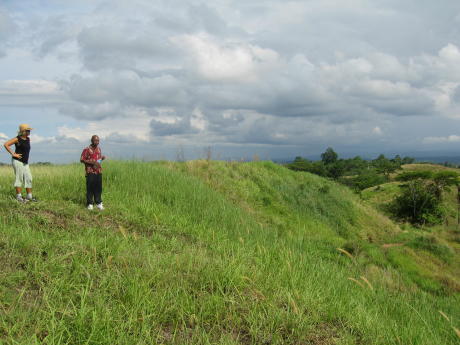
This is Edson's Ridge, just a few hundred meters from the
edge of Henderson Field. The Japanese tried to climb this ridge, in the dark,
and were wiped out by the Marines in foxholes at the top - it was a massacre.
The foxholes are still visible.
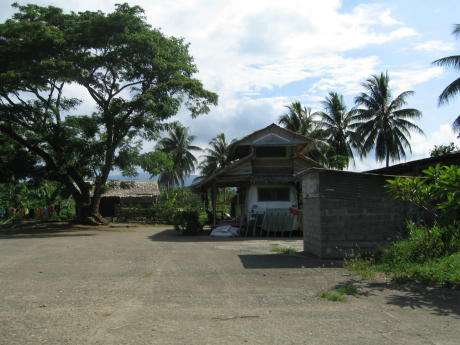
This is not war-related. This is a travel trailer where
the locals have added a second story using thatch.
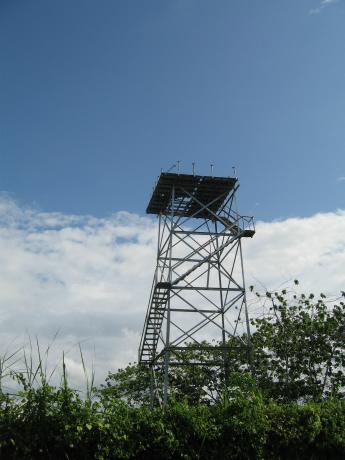
This is the old control tower at Henderson, still
standing after 64, mostly neglected, years.
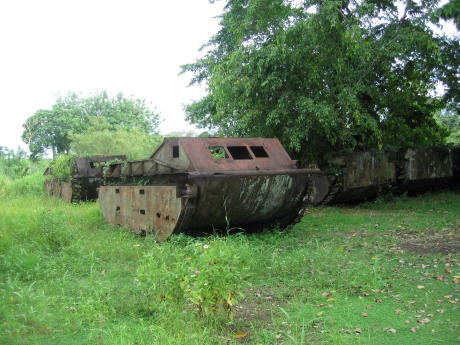
Here are just a few of the 100 landing craft still at Red
Beach, where the Marines left them in August 1942.
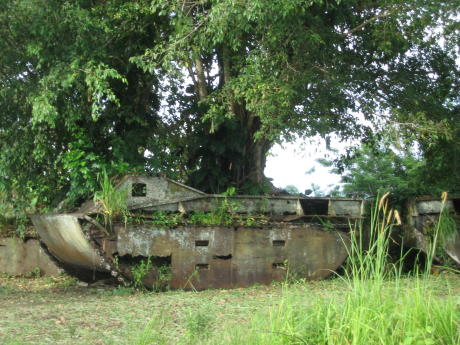
This one has a large tree growing out of it, like a giant
planter.
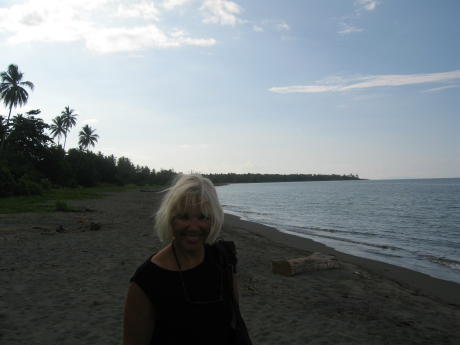
The admiral at Red Beach. This is such a good landing
site that the Japanese used it shortly after the Marines landed. It's the only
place on this part of the island where it doesn't drop off rapidly.
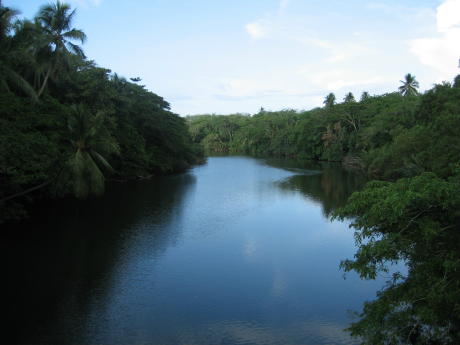
This bucolic spot was known as "Alligator
Creek", so-called because of the crocodiles that swim there. While this
stream is not too infested, they did recently shoot a 10m (33'!) salt-water
crocodile that had been raiding the natives' pig pens.
We wanted to see more but the terrain is still tough and
it was hotter than Hades, so we perspired our way back to the boat. It was
nonetheless both moving and chilling to actually see many of the places that
claimed the lives of so many US soldiers, not to mention 25,000 Japanese. If the
pictures don't mean much, we suggest you read a narrative history and look at the
locations again.
Home
